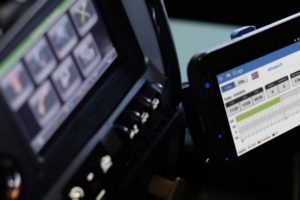Summertime is coming to an end. The beckoning call of hot dogs and swimming pools is almost over and its time to get back into the swing of school.
According to the National Highway Traffic Safety Administration (NHTSA) students are 70 times more likely to get to school safely on a school bus instead of traveling by car, and that has a lot to do with the careful thought that goes into designing and managing the modern school bus fleet. The summer break is the perfect time to prepare fleets for the upcoming school year and get ahead of the influx of new and returning students that compromise the 26 million school bus passengers a year.
With all the regulations and technological advancements impacting today’s school bus fleets, here are three simple tips to consider when planning for a school or school district’s 2018 transportation procedures.
1. Find Ways to Speed up Communication
When an emergency occurs, district staff and drivers need information fast. At a minimum, fleet managers should ensure that all drivers and district staff have updated contact information and know who to reach out to in order to make immediate decisions when an issue arises. Also consider using smart fleet management technology to provide real-time school bus fleet tracking for instant reports on the location of each bus and the students onboard. Technology like this improves security and safety with immediate alerts when buses are not operating at full efficiency or need maintenance.
2. Track Behaviors that Cost Money
Knowing how each vehicle functions is important to find calculable improvements – drivers behave differently for a number of different reasons and each trip brings a new set of challenges, especially considering all the students that are being transported each day. Idling time, speeding, incorrect routes can all affect the bottom line so consider finding solutions that allow fleet managers and drivers to collect, track and report data in real-time to allow for quick action during a situation, but also to help identify fixable and coachable trends and patterns of behavior that can empty the wallet.
For example Columbus City Schools used technology to find a 50% reduction in speeding incidents, an annual savings of $110,000 for inspections and improved customer service. Additionally, this kind of solution allows buses to comply with state mandated regulations of a five-minute maximum idle time, which helps improve environmental responsibility.
3. Ensure Compliance
It’s important to know federal, state and school district processes and procedures, and make sure everyone within the fleet – from drivers to fleet managers, adhere to these rules. Products like Zonar’s EVIR can help improve compliance and accountability for operations. An authenticated, verified pre-trip and post –trip inspection ensures safety defects are identified and reported immediately. No bus leaves the yard without a thorough inspection or without Dispatch being notified. Likewise, use this inspection tool, as many state inspectors do, to self-inspect your fleet in preparation for your annual summer inspection.
School is right around the corner and its worth taking the extra time to prepare during the break. Every day school buses replace more than 17M cars on the roads as parents recognize the safety and convenience they provide. By doing your homework and starting to plan ahead for the 2018 school year, you can help improve fleet management, student safety and fiscal budget management for your school district.







